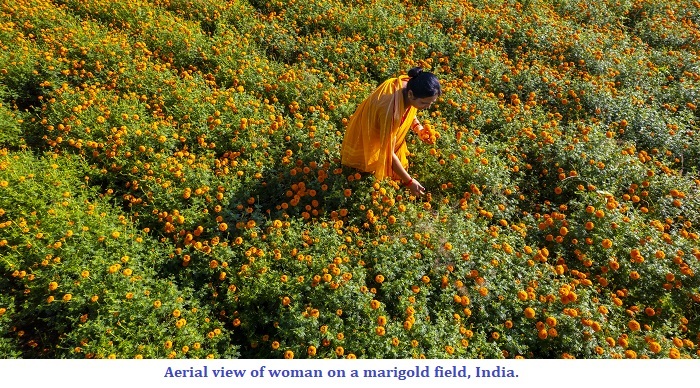
 Data Structure
Data Structure Networking
Networking RDBMS
RDBMS Operating System
Operating System Java
Java MS Excel
MS Excel iOS
iOS HTML
HTML CSS
CSS Android
Android Python
Python C Programming
C Programming C++
C++ C#
C# MongoDB
MongoDB MySQL
MySQL Javascript
Javascript PHP
PHPPhysics
Chemistry
Biology
Mathematics
English
Economics
Psychology
Social Studies
Fashion Studies
Legal Studies
- Selected Reading
- UPSC IAS Exams Notes
- Developer's Best Practices
- Questions and Answers
- Effective Resume Writing
- HR Interview Questions
- Computer Glossary
- Who is Who
What is the full form of CACP ?
Introduction
Commission for Agricultural Costs and Prices (CACP) is a body under the Ministry of Agriculture and Farmers Welfare, Government of India.
India has a vast terrain with a varied climate and varied agricultural production. There are all kinds of farmers, including large farmers and small farmers. The market for agricultural produce is very unstable because it is highly dependent on demand and several other aspects that keep changing from time to time.

Hence, to motivate the farmers to increase their production using modern technologies and to save them from loss or debt, supporting them through MSP is very important. The Government of India founded the Commission for Agricultural Costs and Prices (CACP) to support them with MSP.
Overview of CACP
The Commission for Agriculture Cost and Price is affiliated to the Ministry of Agriculture and Farmers Welfare, Government of India. This was established in January of 1965. Previously it was known as Agricultural Prices Commission. It offers a guarantee of a profitable price environment. Because of the inherent volatility of the agricultural produce market, this commission is crucial for motivating farmers to increase agricultural production. When the market is unstable, it aids farmers in getting a fair price for their products and keeps them out of a debt cycle by helping them sell their crops for a fair price.
Composition of CACP
CACP is composed of five members. These members are −
Chairperson
Member Secretary
One Official Member
Two Unofficial Member
The Non-Official members are closely related to the community of farmers and hence represent them.
Roles and Responsibilities of CACP
The main roles and responsibility of CACP includes recommending MSPs for different crops. Currently, the Commission recommends MSPs for 23 commodities. It also produces Price Policy Reports. Some of its roles and responsibilities include.
The Commission provides recommendations regarding MSPs of five pulses including gram, tur, moong, urad, and lentil.
It also suggests MSPs of seven oilseeds: groundnut, rapeseed-mustard, soyabean, sesame, sunflower, safflower, and niger seed.
It also recommends MSPs for seven cereals: paddy, wheat, maize, pearl millet, ragi, sorghum and barley.
MSPS of four commercial crops are also suggested by CACP. These include copra, sugarcane, cotton and raw jute.
Every year the recommendations are submitted in the form of Price Policy Reports.
The reports are produced separately for Kharif crops, Sugarcane, Copra, Raw Jute and Rabi crops.
The Commission creates a thorough questionnaire and sends it to all state governments, concerned National organisations, and Ministries before drafting the aforementioned five pricing policy papers to get their input. Separate gatherings are then held with farmers from various states, state governments, national organisations like FCI and NAFED, the Cotton Corporation of India (CCI) and the Jute Corporation of India (JCI), as well as trade associations, processing associations, and important central Ministries.
The Commission also travels to other states to analyse firsthand the many obstacles that farmers face while they try to market their goods or even increase the agricultural productivity levels. The Commission then completes its recommendations/reports based on all of these inputs and submits them to the government.
The government then distributes the CACP reports to the respective national Ministries and state governments for their feedback. The Cabinet Committee on Economic Affairs (CCEA) of the Union government makes a final determination regarding the level of MSPs and other suggestions given by CACP after receiving their feedback. Once this choice has been made, CACP posts all of its reports online so that different stakeholders may examine the justification for both its price suggestions and its non-price recommendations.
Conclusion
As we have discussed, CACP recommends MSPs of different commodities. It also creates price policy by conducting detailed surveys by occupying all the stakeholders like the State government and farmers community. They also meet the farmers and visit agricultural fields to listen to the farmers problems especially which they face in the market. This way they help in saving the farmers by providing them with MSPs which are decided on several important parameters.
FAQs
Q1. What is MSP?
Ans. The MSP or Minimum Support Price was launched in 1966-1967 for wheat during the Green Revolution. The purpose of MSP is to provide farmers with a guaranteed price and market while also protecting them against price swings and market flaws. The price at which the government purchases a commodity from producers or manufacturers is referred to as the procurement price. As the government purchases crops from farmers at MSPs, the MSPs become the procurement price.
Q2. What is the FCI?
Ans. The Food Corporation of India (FCI) is a statutory organisation established and managed by the Indian government. It is managed by the Ministry of Consumer Affairs, Food and Public Distribution, Government of India, which was established by the passage of the Food Corporation Act, 1964, by the Indian Parliament. The Food Corporation of India buys wheat and rice from farmers in a variety of ways.
Q3. What is NAFED?
Ans. On October 2, 1958, Gandhi Jayanti, the National Agricultural Cooperative Marketing Federation of India Ltd. (NAFED) was founded. Under the Multi State Co-operative Societies Act, Nafed is registered. The purpose of Nafed was to encourage cooperative sale of agricultural products for the benefit of the farmers.

